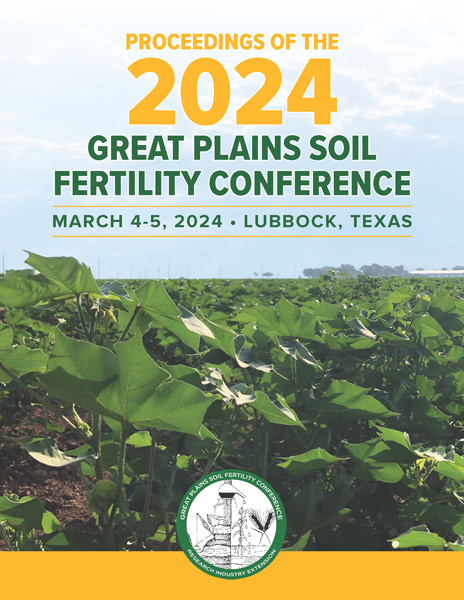Conference Proceedings Available!
Proceedings
Authors
| Filter results3 paper(s) found. |
|---|
1. Strategic Tillage Effects on Crop Yield and Soil Properties and Dryland Crop RotationsThis study evaluated strategic tillage (ST) to control HR weeds and improve crop yields in an otherwise long-term no-till (NT) soil. Treatments were five crop rotations: 1) continuous winter wheat (Triticum aestivum L.) (WW); 2) wheat-fallow (WF); 3) wheat-sorghum (Sorghum bicolor L.)-fallow (WSF); 4) continuous sorghum (SS); and 5) sorghum-fallow (SF) as main plots. The sub-plot were reduced tillage (RT), continuous NT, and ST of NT. Results showed tillage (ST or RT)... A. Obour, J. Holman, L. Simon, A. Schlegel |
2. Long-term Forage Rotation Yields, Soil Water Use, and ProfitabilityForages are important for the region’s livestock industry and are becoming increasingly important as irrigation capacity and grain prices decrease. Forages require less water than grain crops and may allow for increasing cropping system intensification and opportunistic cropping. A study was initiated in 2012 at the Southwest Research-Extension Center near Garden City, KS, comparing several 1-, 3-, and 4-year forage rotations with no-tillage and minimum-tillage. Data presented are from 2013... J. Holman, A. Obour, A. Schlegel, L. Simon |
3. Long-term Cover Crop Effects on Soil Organic Carbon, Nitrogen Stocks, and Water Stable Aggregates in the Semiarid Central Great PlainsGrowing cover crops (CC) in semiarid dryland cropping systems in the central Great Plains (CGP) may provide several benefits to soil health. This study examined long-term CC management effects on soil health in a no-till winter wheat (Triticum aestivum L.)–grain sorghum (Sorghum bicolor L.)–fallow (WSF) cropping system in southwestern Kansas. The experimental design was a split-split-plot randomized complete block with four replications. Main plots were... L. Simon, A. Obour, J. Holman, K. Roozeboom |
